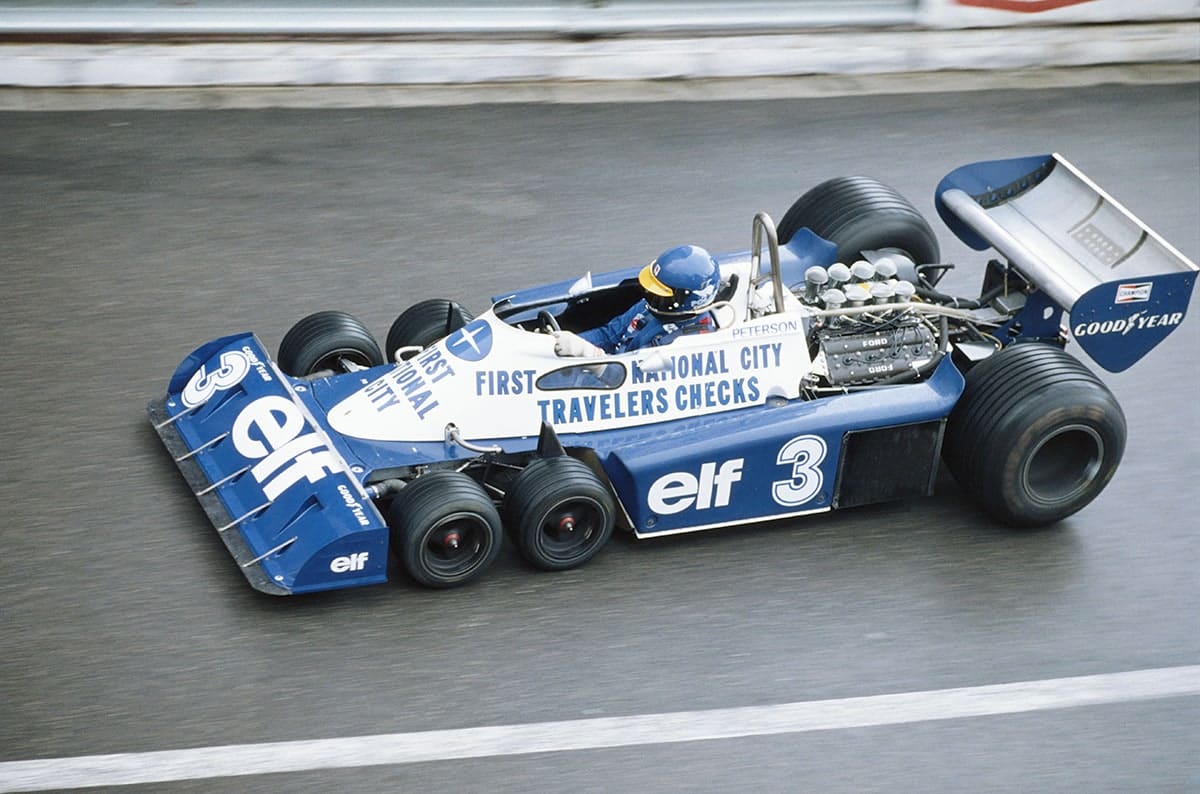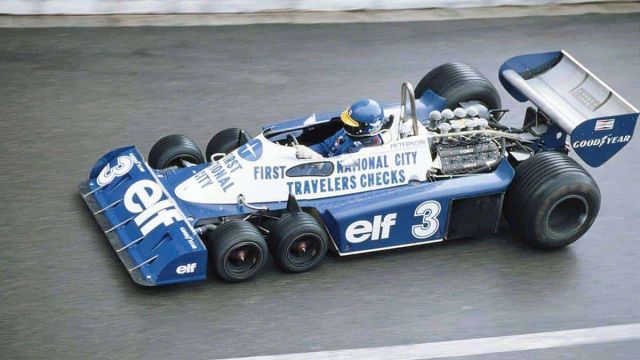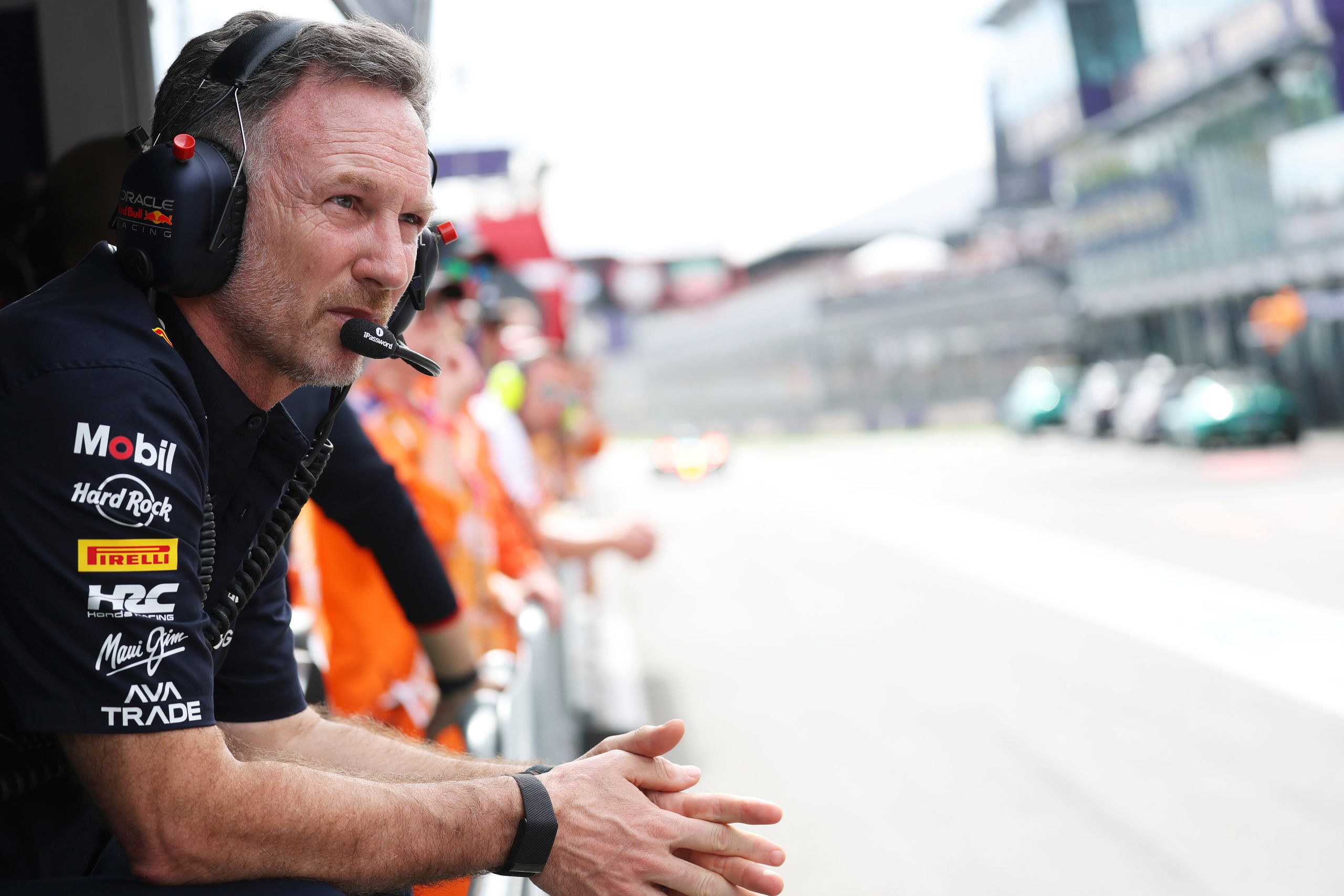The Tyrrell P34: Formula 1’s Radical 6-Wheeler


The famous Tyrrell P34 (aka Project 34) was designed by Tyrrell’s chief designer, Derek Gardner. Although it was built with two ordinary-sized back wheels, it also sported four ten-inches in diameter (254 mm) wheels and tires on the front that were all specially manufactured. It shared the title of “most radical entry” to ever achieve success in Formula One competition with a ‘fan car’ called the Brabham BT46B, which had been developed in 1978. Still, the Tyrrell P34 is widely described as the most recognizable design of all in the entire history of motorsports worldwide.
In September 1975, the P34 was introduced but didn’t actually start to race until the 1976 season. It was quite successful, leading several other racing teams to start designing some six-wheeled race cars of their own. A number of significant changes were made to the car’s overall design for the 1977 season. However, those changes only succeeded in making the car uncompetitive so the entire concept was discarded by Tyrrell for the 1978 Formula 1 season. Then, other teams stopped developing their six-wheeled cars. Later, Formula One rules included a stipulation that all cars must only be four-wheelers. Since then, however, the existing six-wheeler frames have been achieving a modicum of success in a variety of ‘classic’ racing events and have become popular museum pieces.
Tyrrell P34 Design
Formula One rules stipulated during the mid-1970s that the front wing’s maximum width had to be no more than 1.5 metres. Since adequate room was necessary for accommodating not only the feet of the driver but also the front suspension, steering mechanism, and normal size front tires, the front tires had to project both out and above the wing’s sides. The basic concept of the P34 was to utilize tires small enough for completely fitting behind the wing. This would result in two effects. The first was an overall lower drag, which improved the car’s straightaway speeds. The second was cleaning up the car’s overall aerodynamics, which served to provide much cleaner airflow to the rear wing.
Due to the space limitations, the tire would need to be very small, so the team eventually settled on the ten-inch (250 mm) diameter size. However, it was way too small when it came to the contact patch and didn’t provide adequate cornering performance, resulting in the choice to start using four wheels in place of just two. The addition of two more wheels also offered an increase in the total braking area.
Of course, there was a downside, too, and that was a marked increase in the steering system’s complexity, requiring a new suspension system that was physically larger. The team solved the steering complexity via the connection of just the front wheels to the car’s steering wheel and the rear wheels to a bell-crank. And, although this was at first thought of as a problem area, Joel Rosinsky said that its freedom from reaction and gentle steering made it seem as though it could be power-assisted.
In late September 1975, the P34’s new design was on display at the Heathrow Hotel. Initially, it was hidden underneath a tarp and had hoops over its wheels for the purpose of making it look more like a conventional car. This led to some serious amazement when the tarp was removed. In fact, some members of the audience thought that the design was just a publicity stunt. But it wasn’t and on 8 October 1975, the P34 hit the Silverstone track. And, following some more tests, Tyrrell made the momentous decision to start building two more, albeit with a wheelbase that was slightly longer, for racing in the upcoming 1976 Formula 1 season.
Tyrrell P34 Race history
During the 1976 Spanish Grand Prix, the stretched version of the P34 was first raced, proving to be highly competitive. However, the car’s golden moment didn’t come along until the 1976 Swedish Grand Prix. Drivers, Patrick Depailler and Jody Scheckter managed to finish in first and second place. To this date, Scheckter is still the one and only driver who won a race driving a six-wheeled racecar. And, although it ran well on the straights and through the long corners, it struggled on bumpy circuits with variable grip. Therefore, when the end of the season came along, Scheckter decided to leave the team and he insisted that the P34 was really “a piece of junk”.
So, in 1977, Ronnie Peterson replaced him, and the car was redesigned to offer much cleaner aerodynamics. In addition, it had to be redesigned for accommodating his height. The new model, which was called the P34B was both heavier and wider and, although Peterson got some results that were fairly promising, the car was clearly not nearly as good as it was before. Tyrrell was blaming the car’s problems on increased weight, which was then 190 pounds (86 kg) more than the 1,268 pounds (575 kg) Formula One minimum. This was putting a great deal more strain on its brakes and also caused problems in the corners. So, later that season, the team tried addressing the handling issue with an increase in the tracking of its front suspension, however, it moved the tires and basically eliminated the concept’s entire advantage.
So, Tyrrell proceeded to introduce a car with a more conventional layout for the 1978 season in November 1977. He kept the P34 that Scheckter won in and sold all of the rest.
Tyrrell P34 – A Cult Classic
Fast forward to today and the P34 is a popular sight during many historic racing events, which became possible when the Avon tire company started manufacturing bespoke ten-inch tires for Simon Bull, who owned the P34 chassis number six. Then, the resurrected P34 was able to compete at numerous European racing circuits in 1999 and 2000. It was driven by Martin Stretton, winning the TGP series in 2000. In 2008, its sister car repeated that success, driven by Mauro Pane. Now, that car is included in a private Italian collection in Italy.





